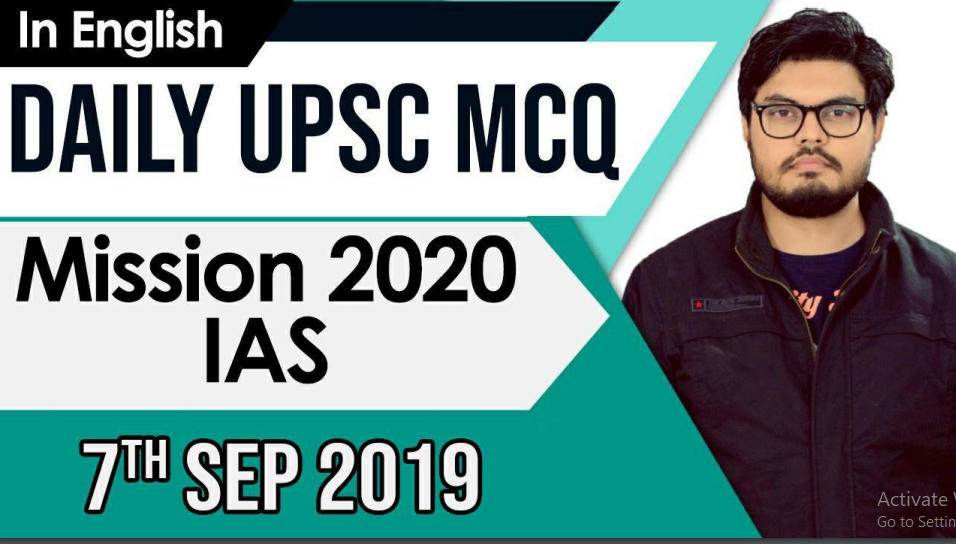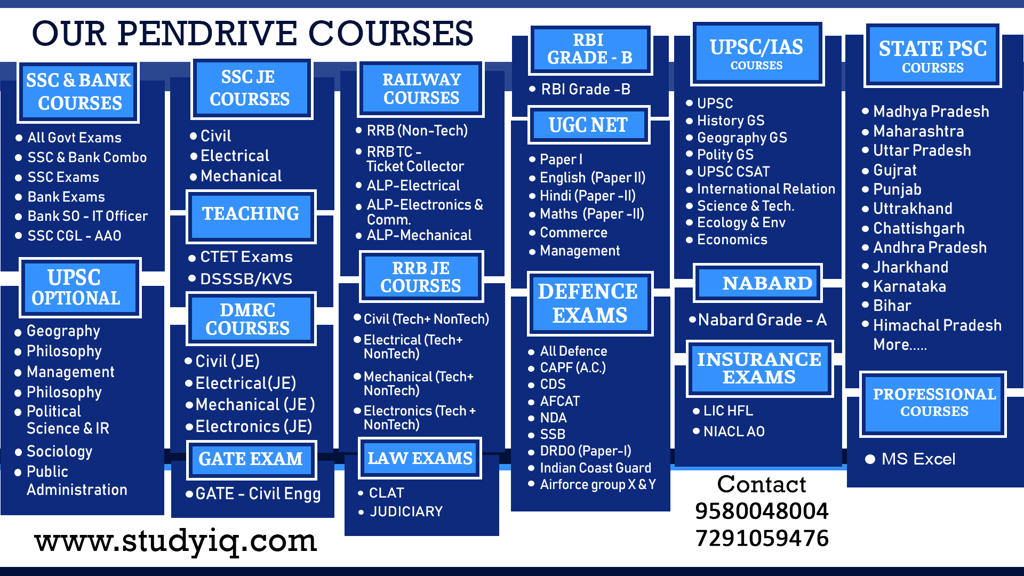Table of Contents
MCQ 1
- Indus valley people knew about iron but not about Gold and silver
- Indus people had the Iranian origin genetically.
Choose correct
(A) Only 1
(B) Only 2
(C) Both
(D) None
Indus Valley settlers had a distinct genetic lineage’
- Genome shows no Steppe pastoralist or Iranian farmer link
- Throwing fresh light on the Indus Valley Civilisation, a study of DNA from skeletal remains excavated from the Harappan cemetery at Rakhigarhi argues that the hunter-gatherers of South Asia, who then became a settled people, have an independent origin. The researchers who conducted the study contend that the theory of the Harappans having Steppe pastoral or ancient Iranian farmer ancestry thus stands refuted. The finding also negates the hypothesis about mass migration during Harappan times from outside South Asia, they argue.
- Vasant Shinde, the professor who headed the Rakhigarhi Project, said on Friday that researchers had successfully sequenced the first genome of an individual from Harappa and combining it with archaeological data, found that hunter-gatherers of South Asia had an independent origin, and authored the settled way of life in this part of the world.
- “They do not contain genome from either the Steppe region or ancient Iranian farmers. The genetic continuity from hunter gatherer to modern times is visible in the DNA results,” Prof. Shinde, affiliated to the Department of Archaeology, Deccan College Post-Graduate and Research Institute, Pune, said.
- The study, he said, finds that the same hunter-gatherer communities developed into agricultural communities and formed the Harappan civilisation.
- The researchers also suggest that there was a movement of people from east to west as the Harappan people’s presence is evident at sites like Gonur in Turkmenistan and Sahr-i-Sokhta in Iran.
- “As the Harappans traded with Mesopotamia, Egypt, the Persian Gulf and almost all across South Asia, there was bound to be movement of people, resulting in a mixed genetic history. India had a heterogeneous population right from the beginning of settled life,” Prof. Shinde said. There was a hint that settled life and domestication went from South Asia to West Asia.
- The Rakhigarhi study was reported in a paper titled “An Ancient Harappan Genome Lacks Ancestry from Steppe Pastoralists or Iranian farmers” in the journal Cell on Thursday.

Origins of farming
- In Europe, ancient-DNA studies have shown that agriculture tended to spread through an influx of people with ancestry in Anatolia, in modern day Turkey.
- The new study shows a similar dynamic in Iran and Turan (southern Central Asia), where the researchers found that Anatolianrelated ancestry and farming arrived around the same time. In South Asia, however, the story appears quite different. The researchers found an absence of Anatolian-related ancestry.
MCQ 2
As a key decision India and _______concluded a military logistics agreement
- USA
- Russia
- Japan
- None
MCQ 3
- Community kitchens are run only by privates entities in some states
- DPSPs details mention the phenomenon of community kitchens for fighting hunger in poor people
Choose correct
(A) Only 1
(B) Only 2
(C) Both
(D) None
- A PIL has been filed in the Supreme Court seeking directions to all states and union territories (UTs) to formulate a scheme for community kitchens to combat hunger and malnutrition.
What does the PIL seek?
- Many children under the age of five die every day due to hunger and malnutrition and this condition was violative of various fundamental rights, including the right to food and life of citizens.
- Therefore, it is necessary to create a national food grid for people falling outside the purview of the public distribution scheme.
- Various schemes to combat hunger, malnutrition and the resulting starvation are in place. But, in reality, effective implementation of the schemes was unclear and fairly limited.
- In the interest of justice and for entitlement of nutritious food, which has been held as a basic fundamental and human right, in both national and international law, alike, the establishment of community kitchens may be directed as an added mechanism for provision of nutritious food with the intent of holistically combating eradication of hunger, malnutrition and starvation in the country, and diseases, illnesses and deaths resulting thereof.
Way ahead:
- There are various state-funded community kitchens being run in Tamil Nadu, Andhra Pradesh, Uttarakhand, Odisha, Jharkhand and Delhi that serve meals at subsidised rates in hygienic conditions.
- Then, there are the concepts of soup kitchen, meal centre, food kitchen or community kitchen, in other countries, where food is offered to the hungry usually for free or sometimes at a below-market price.
- Food and Agriculture Report, 2018 stated that India houses 195.9 million of the 821 million undernourished people in the world, accounting for approximately 24% of the world’s hungry.
- Prevalence of undernourishment in India is 14.8%, higher than both the global and Asian average.
- The most alarming figure revealed is that approximately 4500 children die every day under the age of five years in our country resulting from hunger and malnutrition, amounting to over three lakh deaths every year owing to hunger, of children alone.
MCQ 4
1.Ethanol is basically ester of fatty acids with 99%-plus purity, which can be used for blending with petrol
- Produced mainly from molasses, a byproduct of sugar manufacture.
Choose correct
(A) Only 1
(B) Only 2
(C) Both
(D) None
Ethanol Blended Petrol (EBP) Programme:
- Launched in 2003 on pilot basis.
- The aim is to promote the use of alternative and environmental friendly fuels.
- Implemented by the Ministry or Oil Marketing Companies (OMCs).
- CCEA has approved an increase in the price of ethanol to be procured by public sector oil marketing companies (OMCs) from sugar mills for blending with petrol for the 2019-20 supply year from December 1.
- It has also allowed conversion of old sugar into ethanol.
- India is dependent on imports for about 82.1% of its crude oil requirement and to the extent of about 44.4% in case of natural gas.
- India is expected to need 10 billion litres of ethanol annually to meet the 20% blending target in 2030 if petrol consumption continues to grow at the current pace. At present, the capacity stands at 1.55 billion litres a year.
MCQ 5
ANDREX project is related to
- Wildlife conservation
- Space weaponization
- Antibiotic resistance control
- how the ocean absorbs carbon dioxide
- Scientists have discovered that, contrary to existing assumptions, biological processes far out at sea are the most important factors determining how the ocean absorbs carbon dioxide.
- This enhances the understanding of the link between the Southern Ocean — next to Antarctica — and the atmospheric carbon dioxide levels.
- Scientists studied data collected as part of the ANDREX project (Antarctic Deep water Rates of Export) which measured the physical, biological, and chemical properties of the waters in the gyre between 2008 and 2010.
- Carbon dioxide is absorbed in the surface oceans and stored in the deep seas, gradually, over a timescale of 100s to 1,000s years.
- The Southern Ocean plays a critical role in how the carbon dioxide is taken out of the atmosphere, and knowing how it functions helps scientists understand this mechanism’s role during dramatic climate transitions in the past, such as the ice ages, and better predict the current and future climate change.
- ANDREX project:
- The project seeks to assess the role of the Weddell gyre in driving the southern closure of the meridional overturning circulation, in ventilating the deep global ocean, and in sequestering carbon and nutrients in the global ocean abyss.

MCQ 6
Mars Reconnaissance Orbiter is sent by
- NASA
- ESA
- JAXA
- ISRO
- Avalanche on Mars
- NASA’s ‘Mars Reconnaissance Orbiter’ (MRO) captured dust cloud from an avalanche of ice blocks on North Pole of Mars.
- The photo of the avalanche was captured by onboard ‘High Resolution Imaging Science Experiment’ (HiRISE) camera.
- According to NASA, every spring the sun shines on the side of North Pole of Mars known as the north polar layered deposits.
- This warmth destabilises the ice blocks, break loose which causes Avalanche.
- Avalanches can also be caused by a number of things on Mars surface.
- In June 2018, NASA’s orbiter was able to spot an avalanche, caused by a meteoroid impact on Mars.
- The meteoroid crashed on a slope, it destabilized it and caused an avalanche of dirt and dust.
Mars Reconnaissance Orbiter (MRO)
- MRO is a multipurpose spacecraft of NASA designed to conduct reconnaissance and exploration of Mars from orbit.
- Launched in 2005, it carried instruments for studying the atmosphere of Mars and to search for signs of water on planet.
- The scientific goals of MRO, according to NASA, are
- Search for evidence of past or present life in Mars.
- Understand the climate and volatile history of Mars.
- To Characterize the geology of Mars.
- To accomplish these goals, MRO carries multiple instruments and it has 3 cameras,
- High Resolution Imaging Science Experiment (HiRISE)
- Context Camera (CTX)
- Mars Color Imager (MARCI)
- MRO has also has,
- A spectrometer called ‘Compact Reconnaissance Imaging Spectrometer for Mars’ (CRISM),
- A radiometer called the ‘Mars Climate Sounder’ (MCS), and
- A radar instrument called ‘Shallow Radar’ (SHARAD).
Download Free PDF

























 WhatsApp
WhatsApp